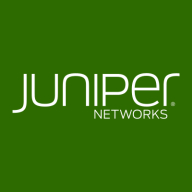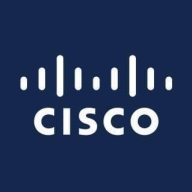

Juniper EX Series Ethernet Switches and Meraki MS Switches are both significant products in the Ethernet switches market. While Juniper is favored for its affordability and versatile management features, Meraki gains an edge with its comprehensive cloud management and ease of use.
Features: Juniper Ethernet Switches are recognized for their flexibility and ease of configuration alongside the reliable Junos OS. Virtual Chassis technology supports efficient operation, and the products integrate well with other Juniper solutions. Meraki MS Switches stand out for their seamless cloud management and robust API, which enhance visibility and remote configuration capabilities, especially useful for organizations without dedicated IT staff.
Room for Improvement: Juniper could improve regional support consistency and stability with some software updates. The high cost of support and complexities in management interfaces also require attention. Meraki, while praised for its simplicity, faces criticism for high costs and dependency on cloud connectivity, restricting functionality if lost. The licensing model is costly over time and could be more flexible.
Ease of Deployment and Customer Service: Juniper is ideal for on-premises preferences, offering extensive configuration capabilities and localized support, though this varies by region. Meraki simplifies deployment, especially in cloud environments, but relies heavily on internet connectivity. Feedback indicates Meraki's support is generally efficient, albeit costly.
Pricing and ROI: Juniper offers competitive pricing with flexible models, ensuring cost-effectiveness and lower maintenance needs, providing a reliable ROI. Meraki's subscription model raises initial costs, but its integrated management and stability justify expenses, delivering a positive ROI for businesses agreeing with its pricing strategy.
Compared to other low-end switches with similar features, these are more robust and offer better scalability, which justifies the higher cost.
I have not faced any hardware issues requiring support due to the stable nature of their products.
I find them very competent.
Local partners and local distributors cannot open direct tickets, but any level of partner with other OEMs such as Cisco can open a ticket directly, which is a connectivity advantage that Juniper lacks.
If the devices are licensed, the support team will assist you depending on the severity level of the case.
The support is excellent and rated ten out of ten.
Cisco's tech support is pretty good, and I would rate it an eight out of ten.
Adding another switch to an existing setup turns them into a single virtual switch.
The Virtual Chassis provides great scalability, making it a scalable solution.
The EX series supports scalability well, with newer series like EX4100 offering stacking of up to eight switches.
They're quite scalable for my environment.
They have separate control and forwarding planes, which enhance scalability and stability.
During peak time at nine, the traffic passes through the switches perfectly.
Juniper EX Series Ethernet Switches proves to be an equally good switch.
If something happens to the device or hardware, Cisco will automatically change the device by the next business day.
We faced issues following firmware updates, which we now handle by performing updates outside of working hours.
One area that can be improved is the handling of power interruption, as it can cause the platform to crash.
Some integration with AI could be a good idea since I heard that Juniper already has systems to deploy AI within the EX device, but I haven't had the opportunity to try that.
With other OEMs, customers or partners can directly open tech tickets.
Meraki should also consider improvements in stacking features, particularly in the lower-end models like NS130, where stacking isn't supported, unlike with Cisco traditional switching.
There are compatibility issues with certain Power over Ethernet (PoE) devices, which we would like to see resolved.
Most people are familiar with the Cisco commands, and it would be beneficial if the switch could be accessed by GUI configuration and by normally accessing the console.
The switches have become more expensive than before.
It is rated high on the scale, and I would say it is definitely on the high side, confirming a rating of one, which means it is very expensive.
In terms of pricing, the Juniper EX Series is cost-effective compared to competitors like Cisco.
Meraki MS Switches, including their licensing, are somewhat expensive, particularly when compared with competitor solutions like HP.
Meraki pricing is a little premium compared to other vendor products.
Pricing is affordable, and licenses for the cloud need to be purchased every three to five years.
We are using the Juniper MX 104 L3 switches and SRX 1500 firewall since 2019, and we have not faced a single failure.
The important thing for our use case of Juniper EX Series Ethernet Switches has been reliability, and there are features such as the Virtual Chassis feature, which is one of the things we use.
Juniper EX series switches offer great technology, particularly their Virtual Chassis technology, which is an excellent feature for stacking switches and functions like a single virtual switch.
The control plane is in the cloud, and the data plane is local, allowing manageability from anywhere.
One of the most valuable features of Meraki MS Switches is its precise traffic analytics capabilities, allowing us to query the system for any place at any time.
The most valuable feature is the ability to access devices from anywhere in the world through the cloud.
| Product | Market Share (%) |
|---|---|
| Meraki MS Switches | 3.0% |
| Juniper EX Series Ethernet Switches | 2.9% |
| Other | 94.1% |


| Company Size | Count |
|---|---|
| Small Business | 39 |
| Midsize Enterprise | 17 |
| Large Enterprise | 24 |
| Company Size | Count |
|---|---|
| Small Business | 53 |
| Midsize Enterprise | 20 |
| Large Enterprise | 22 |
Juniper Ethernet Switches are made up of the EX Series product line. These EX Series Ethernet Switches provide branch, campus and data center networks with access, aggregation and core layer switching solutions. The end result is secure, fast and efficient application and data delivery.
Today's enterprise networks increasingly demand mobile access, optimal availability, virtualization, and unified communications. The Juniper Ethernet Switches EX Series caters for all of these requirements, ensuring business continuity, network flexibility and maximum productivity.
Juniper EX Series switches are AI-driven, operated and managed using the Mist AI cloud from Juniper. This gives EX customers simplified operations with insights, anomaly detection and automated troubleshooting, empowering IT teams to deliver the best user experience across the wired network.
Meraki MS Switches are first-line cloud-managed access and aggregation switches that combine the benefits of cloud-based centralized management with a reliable access platform. With cloud management, thousands of switch ports can be configured and monitored instantly over the web.
Meraki MS Switches Features
Meraki MS Switches have many valuable key features. Some of the most useful ones include:
Meraki MS Switches Benefits
There are many benefits to implementing Meraki MS Switches. Some of the biggest advantages the solution offers include:
Reviews from Real Users
Meraki MS Switches is a solution that stands out when compared to many of its competitors. Some of its major advantages are its accessibility, application visibility, and flexibility features.
Jóhann T., IT Manager at Sund Upper Secondary School, says, “Accessibility is what I find most valuable in Meraki MS Switches, because I'm able to check things and see if they're working, without being on-site at all times.”
A Senior Network Engineer at a tech services company mentions, "The top feature of Meraki MS switches for me is Layer 7 application visibility. Another positive in general is that you don't need to set up a console to the switch itself; it dials into a single dashboard where you can completely manage all your network devices."
John M., user at Baseline Consulting, LLC, comments, "I like the flexibility of the Meraki firewall. It gives you the ability to lock things down. Having multiple VLANs is helpful for the switching infrastructure and firewall. It's crucial when you have a public-facing VLAN, a private-facing VLAN, and a secure VLAN."
PeerSpot user William M., Consulting Engineer at IV4, expresses, "It is easy to deploy, maintain, and update. It has been trouble-free so far. I am still a Cisco command-line bigot, but the web interface makes it a lot easier for our help desk to interact with a client. When the clients call in and say that they aren't able to connect, it takes the help desk 10 minutes or less to look at everything in the enterprise or location. They can look at the firewall, switches, or access points in the dashboard. That's why I like the dashboard."
We monitor all Ethernet Switches reviews to prevent fraudulent reviews and keep review quality high. We do not post reviews by company employees or direct competitors. We validate each review for authenticity via cross-reference with LinkedIn, and personal follow-up with the reviewer when necessary.